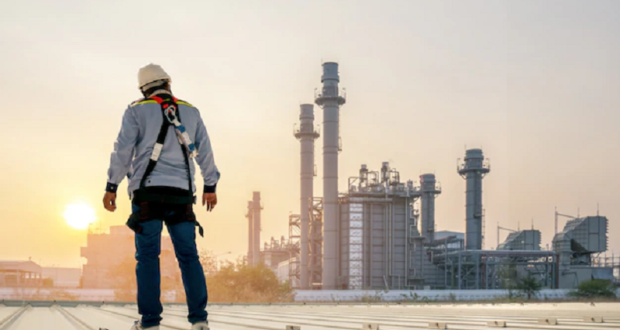A Comprehensive Guide to Industrial Tourism: Locations, Attractions, and Tips
Industrial tourism is a growing niche in the travel world that involves visiting active or historic industrial sites. This type of specialty tourism allows travelers to learn about manufacturing processes, cultural heritage, and technological innovations firsthand. Tours provide insider access to places like factories, mills, mines, breweries, and distilleries. Read on for an in-depth guide to understanding industrial tourism and planning your own industrial-themed trip.
What is Industrial Tourism?
Industrial tourism refers to tourism activities that provide access to the facilities, processes and people involved in manufacturing and the production of goods. It encompasses visits to sites where industry forms part of the cultural heritage of an area, as well as places where industry is still active today.
The key difference between industrial tourism and a standard factory tour is that industrial tourism locations utilize the industry and its history as an attraction, while factory tours focus solely on the process. Industrial tourism combines learning about manufacturing with understanding the broader social and economic impacts of the industry.
The origins of industrial tourism can be traced back to the late 18th and early 19th centuries. Some of the first recognized examples were in coal mining areas of England and Wales, where visitors could pay to enter mines and observe operations firsthand. The advent of steam power led to increased interest in iron works and textile factories as tourist destinations to see the new technologies in action.
Industrial tourism expanded significantly in Britain during the late Victorian era, as the public curiosity about manufacturing grew. Locations like Derby and Manchester offered popular tours of factories producing locomotives, automobiles, ceramics and other goods. Educational groups, tourists and even royalty took part in early industrial tourism.
The industry declined during the 20th century as access became more restricted for safety and business reasons. However, many historic sites were preserved as museums still open to visitors today. Industrial tourism has seen a resurgence in recent decades, as both heritage sites and modern factories recognize the public interest in this niche.
Popular Industrial Tourism Destinations
Industrial tourism attractions can now be found across the globe. Here are some of the top destinations and sites to consider for this unique type of travel experience:
Europe
Europe’s long history of manufacturing, agriculture and resource extraction has left a rich variety of industrial tourism possibilities.
- United Kingdom – The birthplace of the industrial revolution still offers many chances to explore this history. Recommended sites include: Ironbridge Gorge museums (birthplace of industrial revolution), Derby Silk Mill (silk factory), Beamish Open Air Museum (recreated 1900s Yorkshire village), Cadbury World (chocolate factory), and the Eden Project (botanical gardens in former clay mine).
- Germany – Technological innovations and major industries like beer making can be observed across Germany. Top attractions include: German Museum of Technology in Berlin, Zollverein Coal Mine Industrial Complex (UNESCO site), and Beer Tours like the Heineken Experience.
- Belgium – Home to a thriving chocolate and beer industry, with options like the Coca-Cola Factories, Verbeke Foundation Art/Industry Space, and Guinness Storehouse in Brussels.
![Beamish Open Air Museum]
Asia
Both emerging economies and strong manufacturing traditions provide one-of-a-kind industrial tourism sites throughout Asia.
- Japan – Japan has a long artisan history and strong modern industries. Visit centuries old sake breweries, historic silk producers, and cutting edge factories producing robots, electronics and automobiles. Top spots are Toyota Commemorative Museum and Sapporo Beer Museum.
- India – Textile factories and agricultural processing facilities offer insights into India’s culture and development. Recommended spots are Anokhi Museum of Hand Printing, Daribo handmade paper mill, and Amul dairy cooperative.
- China – China’s rapid development has created factory tourism opportunities to see everything from mobile phone assembly to pearls being cultivated and silk woven. Highlights include Shanghai Car Makers tours and Huawei headquarters.
The Americas
From techniques passed down for generations to cutting edge innovation, the Americas provide diverse industrial tourism for both history and technology buffs.
- USA – The USA’s past and present manufacturing capabilities can be explored at sites like the Ford Rouge Factory Tour, Hershey’s Chocolate World, Corning Glass Museum, and North Carolina tobacco farms.
- Cuba – Cigar factories and rum distilleries reveal Cuba’s iconic industries and cultural traditions. Popular spots are the Havana Club Rum Museum and cigar factories like Partagás Cigar Factory.
- Brazil – Coffee and sugarcane production are central to Brazil’s culture and can be experienced at sites like Daterra Coffee Farm and the Cachaça distillery tour in Rio de Janiero.
![Cuba Cigar Factory]
No matter which destination you pick, combining industrial heritage sites with active modern factories promises a well-rounded look into how goods have been and continue to be made globally.
Planning an Industrial Tourism Trip
While major factories like BMW or Caterpillar can be found through a quick online search, discovering more unique spots takes some additional sleuthing. Here are tips for planning your ideal industrial tourism getaway:
- Look locally – Search for small craft industries in your region from printmaking studios to furniture makers. These workshops often welcome visitors.
- Utilize tourism boards – Reach out to local tourism boards and convention and visitors bureaus for recommended factories and producer tours or itineraries.
- Search industry associations – Associations for industries like distilling or mining may list tour-able sites across their network.
- Look for culinary options – Many food factories like cheesemakers or family wineries offer tours and tastings.
When inquiring about any industrial tourism site, ask important questions upfront like:
- What are the tour hours and do you need reservations?
- Are there age restrictions or safety requirements?
- How much walking is involved and what are the accessibility options?
- Can you take photographs or are there restricted areas?
- What is the total tour length and size of tour groups?
- Are there gift shops, cafes or special programs offered?
While exciting, active industrial sites do come with safety concerns to consider:
- Closed toed shoes and long pants are often required.
- You may need to wear safety goggles, vests or hard hats in certain areas.
- Follow all posted signs and instructions from tour guides.
- Do not venture off from your group or into unauthorized zones.
- Be cognizant that equipment may be operating during your visit.
Depending on if a site is geared more for education or profit, tours may range from free to over $100 per person. Factory outlets sometimes offer coupons. Average tour length is 1-2 hours.
Most industrial tourism factories and historic mills are open during regular weekday business hours. Visiting on weekends or joining a multi-day packaged bus trip can provide more flexibility.
Proximity to urban hubs with airports and hotels make industrial tourism easy to pair with other activities. Renting a car allows access to more remote factories and mills in countryside locations.
Highlights and Tips for Industrial Tourism
To make the most of your experience, keep these best practices in mind:
- Take the first tour available. This allows you to repeat favorites later.
- Ask questions! Tour guides are fonts of information you won’t find elsewhere.
- Purchase souvenirs like products made onsite or branded goods to remember your visit.
- Arrive early to site museums and demonstrations.
- For active factories, lunch breaks are often the best time to photograph idle equipment.
- Show interest and respect to staff you interact with during a tour or visit.
- Follow all photography rules.
- Combining industry focused tourism with culinary and cultural activities provides a richer experience.
Gaining insider knowledge of specialized processes not known to the general public is the draw for many technical travelers. Others enjoy the nostalgia of exploring how items were once handcrafted during bygone eras.
As people become further removed from production in the digital age, industrial tourism also provides important perspective on where products originate. Learning the effort behind manufacturing quality goods can rekindle pride in craftsmanship. Unique souvenirs found in gift shops make meaningful mementos of a visit.
Conclusion
Industrial tourism grants travelers exclusive vantage points into the facilities and techniques used to create the products we rely on daily. Visiting these factories, mines and mills offers exposure to skilled trades along with an appreciation of cultural heritage. Whether your goal is to glimpse cutting edge manufacturing abroad or glimpse into history at preserved workshops, incorporating industrial sites will take you behind the scenes in a fascinating way. Plan an industrial tourism adventure on your next trip to discover these hidden gems!
FAQs on Industrial Tourism:
Q: What is industrial tourism?
A: Industrial tourism involves exploring operational industries, factories, and manufacturing units to gain insights into their processes and history.
Q: Why choose industrial tourism?
A: It offers a unique blend of technological innovation and historical significance, providing a captivating and educational experience.
Q: What can one expect during an industrial tour?
A: Participants can expect firsthand encounters with machinery, production processes, and the rich stories behind the evolution of industries, making for an engaging and informative experience.
Q: How can I plan an industrial tourism trip?
A: Research industrial sites, check for guided tours, and ensure safety measures. Many industries welcome visitors, so contacting them in advance is a good idea.
Q: Are there specific industries ideal for tourism?
A: Yes, industries such as manufacturing, technology, and historical sites like old factories can offer intriguing insights and are popular choices for industrial tourism.
Q: Is industrial tourism only for professionals?
A: No, industrial tourism caters to a diverse audience, including students, families, and anyone interested in gaining a deeper understanding of industrial processes and their impact on society.
Q: How does industrial tourism contribute to education?
A: It serves as an educational tool, providing real-world context to theoretical knowledge and fostering a greater appreciation for the role of industries in our daily lives.
Q: Are there any safety precautions for industrial tours?
A: Yes, following guidelines provided by the industrial site, wearing appropriate safety gear, and adhering to rules ensure a secure and enjoyable experience during it.
 Living There
Living There




